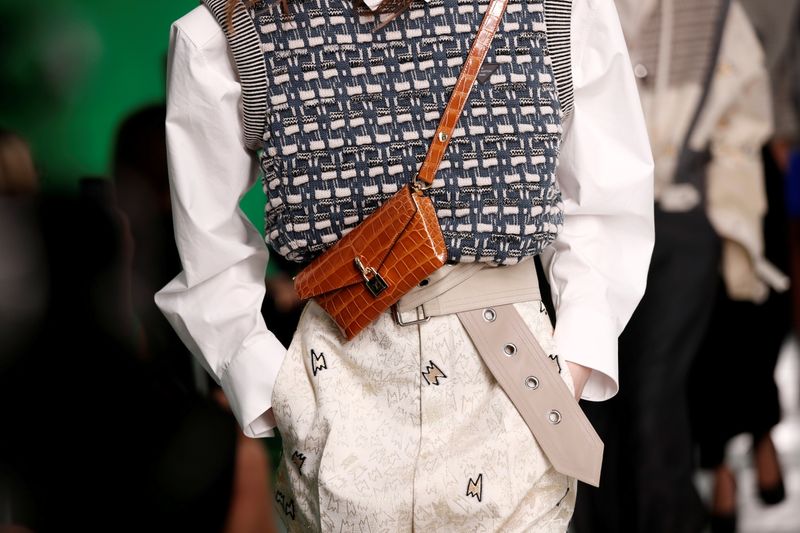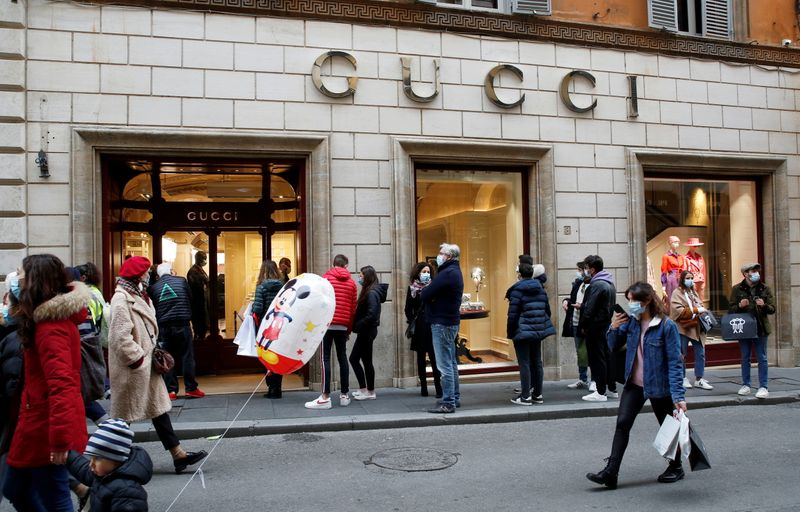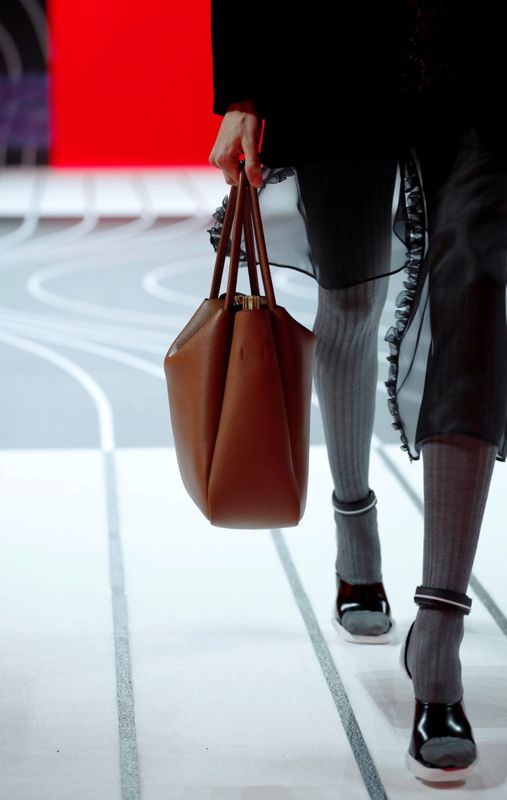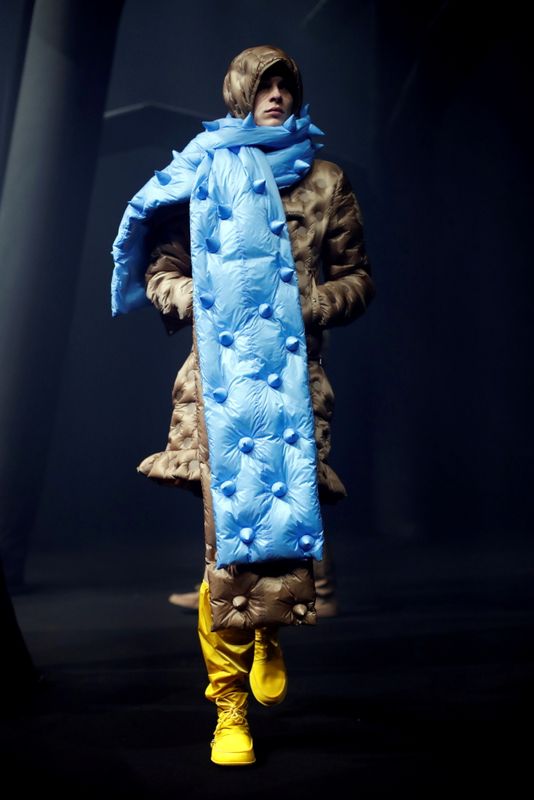MILAN (Reuters) – As Italy entered a new coronavirus lockdown and shut shops in March, Genoa-based jeweller Gismondi 1754 turned to messaging service WhatsApp to sell a 300,000 euro diamond ring to a wealthy Swiss client.
At the same time, sales assistants at luxury puffer jacket brand Moncler were arranging gourmet dinner deliveries to customers homes so they could dine in style while watching a video streaming of the brand’s latest collection.
The pandemic has forced luxury goods companies to use social media, video and virtual showrooms to woo their wealthy customers in Europe and keep them shopping at a time when tourists, especially from China, have been absent for more than a year.
Retailers reopened in Britain and most of Italy on Monday, but they remain shut in France and access is restricted in Germany, where in Berlin, for example, a negative COVID test is required to go into most shops.
Senior executives in the industry said this trend of selling outside the traditional store network, while not replacing the need for physical shops, is here to stay.
“We are learning that we can also have a high level of service with a low level of physical contact,” Moncler’s boss Remo Ruffini told Reuters. “Distant sales are a new frontier, something in the middle between e-commerce and a traditional store.”
Analysts say that lockdowns and “staycationing” mean that wealthy Europeans have money to spend that they are not splurging on fancy hotels or Michelin starred restaurants.
Designer brands are keen to capture some of that cash.
High-end labels such as Hermes, which used to be more reticent to sell online, have had to fully embrace e-commerce. Online revenues for the industry have doubled to nearly 20% of sales in the past year alone, based on analyst estimates. Boston Consulting Group expects that percentage to rise to 25% by 2023.
KEEPING IN TOUCH
Luxury labels have also invested in transforming store assistants into personal shoppers who pamper their VICs – very important clients – by sending them products at home and keep in touch regularly. Most brands now stream products on social media and show customers specific product videos.
Before the pandemic, Gismondi would not have sold a 300,000 euros, 10-carat diamond ring without showing it to the client in person. “I was on the phone chatting with the lady who is buying it, and it came up that this was the dream of a lifetime for her,” Massimo Gismondi, chief executive of the jewellery group, said.
From that moment, an exchange started with the lady via WhatsApp and video-calls to find the perfect design for the ring that will be delivered to her home.
“People are craving for leisure, for returning to savour life and spending,” Gismondi told Reuters.
French luxury group LVMH’s star label Louis Vuitton in addition to online sales has started taking its shops to wealthy clients’ doorsteps in the United States.
The “LV by Appointment” campaign essentially brings a tailor-made shop on wheels to the customer, curated with a personalised selection of pieces – from leather goods to watches and perfumes – for those who opt for the service.
LVMH, the first to report results for the first quarter, set a very bullish tone for the industry. Revenues bounced back strongly, with its fashion and leather goods division surging 52% – double analysts’ forecasts. Sales in Europe remained in negative territory, but the 9% decline was a major improvement from the minus 24% seen in the fourth quarter.
Luxury brands have had a strong recovery in China since shops began to reopen there last spring. But in Europe and the United States finding new ways to connect with customers has helped them to mitigate last year’s sales declines.
Analysts say that improving sales in those two regions should also help revenues this year. Sales in Europe and the United States accounted for 60% of the total in 2019, and should come in at just under 50% by 2025, consultancy Bain said.
RELATIONSHIPS
Francois-Henri Pinault, CEO of Gucci owner Kering, said in February that the group’s revenues from “distant sales” – or sales outside its global store network – had risen sharply last year. The group had trained 400 sales assistants in 16 countries for this purpose, he said.
One source at an Italian luxury fashion label said typically a brand’s marketing department will provide a list of clients to contact, based on what they have bought over the previous year.
The sales assistants then phone customers, show them the latest arrivals via video chat and send them clothes or shoes to try on.
“You create a strong relationship between the sales people and the customer,” Prada’s CEO Patrizio Bertelli told Reuters.
“We have gone from the shop assistant that simply shows you a product to someone who also does a bit of marketing, knows customers, their taste and their habits, reaches out to them and sends them stuff home.”
A Milan-based PR executive who spends on average 40,000 euros ($47,552.00) a year in Prada’s stores said that since last year Prada has regularly sent her videos about its clothes.
“If there is something I like they send it home. They know my size and if in doubt they send more than one size. I buy what I like and I send back the rest,” she said.
Over the past year, cashmere sweater label Brunello Cucinelli has been organising video calls with 30-40 customers at once to keep them engaged.
“It allows us to have a dialogue with a number of people which, if we had to arrange a physical appointment, would take us perhaps 3-4 years,” the brand’s co-CEO, Luca Lisandroni, told Reuters. He also said that brands should not become too insistent in trying to sell their wares.
“Some people like being contacted and stimulated, others don’t want to be solicited too much,” he said.
($1 = 0.8412 euros)
(Editing by Jane Merriman)

























